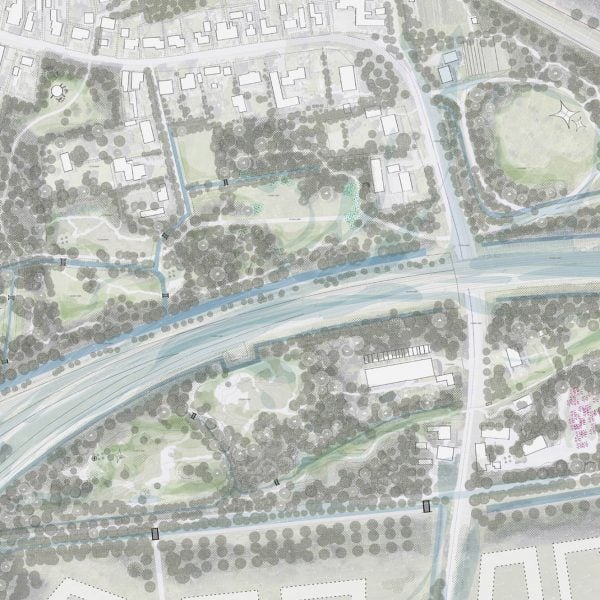Dezeen School Shows: a thesis project proposing energy conservation methods for The Netherlands is included in Dezeen’s latest school show by students at the Amsterdam Academy of Architecture.
Also included is a project exploring wind patterns to influence infrastructures, and another exploring ways to improve seawater conservation.
Institution: Amsterdam University of the Arts
School: Amsterdam Academy of Architecture
Courses: Architecture, Urbanism and Landscape Architecture
Tutors: Gert-Jan Wisse (mentor), Nikol Dietz, René van der Velde, Jerryt Krombeen (mentor), Jandirk Hoekstra †, Hiroki Matsuura, Jeroen van Mechelen (mentor), Marten Kuijpers, Jana Crepon (mentor), Jacques Abelman, Raul Corrêa-Smith, Wouter Kroeze (mentor), Txell Blanco Diaz, Paul Kuipers, Stephan Verkuijlen (mentor), Bernard Foing, Natalie Dixon, Thijs de Zeeuw (mentor), Erik A. de Jong and Lada Hršak
School statement:
“The Academy of Architecture is an internationally-oriented educational and research institute where students are trained for the national and international field of architecture, urbanism and landscape architecture.
The artistic and personal development of the student is the key focus within the intensive education, which is characterised by a high level of expertise, where a culture of innovation, collaboration and experimentation challenges students to look beyond borders and break new ground.
“Students study and work simultaneously to become spatial designers and thinkers, with strong roots in practice, as well as critical thinking focused on the future of the respective professions.
“Architecture, urbanism and landscape architecture courses are offered concurrently and in an interdisciplinary manner in order to prepare students for integrated and future-focused professional practice, thus paving the way for a transformation of the design professions.
“The world around us is constantly changing and at a rapid pace. The new generation of designers faces major, cross-border and wide-ranging questions.
“The challenges – related to climate change, resource scarcity, energy transition, social inequality and declining biodiversity – are urgent, complex and also all spatial issues for which answers must be sought now in order to maintain perspective on a sustainable and inclusive future.”
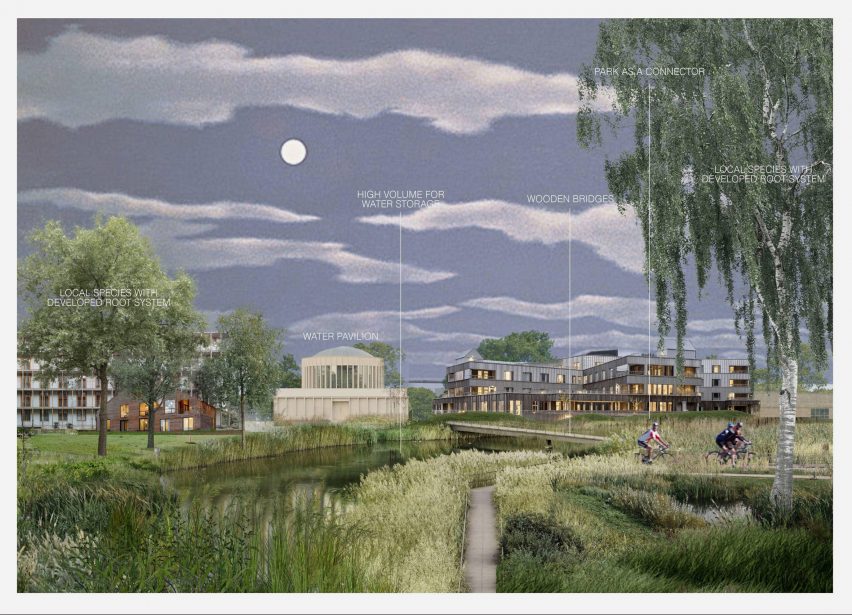
Low-Tech Haven by Iaroslava Nesterenko
“My thesis Groningen, Low-Tech Haven explores how the energy transition will impact the cities we live in, proposing a prioritisation of energy conservation over production.
“This dichotomy shapes my research, influencing my perspective on energy transition as a crucial societal and spatial endeavour.
“The layers of the Dutch landscape — shaped over centuries by various energy sources – now await the integration of renewables. How will this new layer change the urban environment of the Dutch context?
“The thesis emphasises the urgent need to reassess how we use and distribute energy, developing a toolkit of practical, low-tech solutions, including urban green-blue network, natural climate control through methods like solar envelopes and wind management, and boosting the efficiency of cargo transport, mobility and food distribution.”
Student: Iaroslava Nesterenko
Course: Urbanism
Tutors: Jerryt Krombeen (mentor), Jandirk Hoekstra † and Hiroki Matsuura
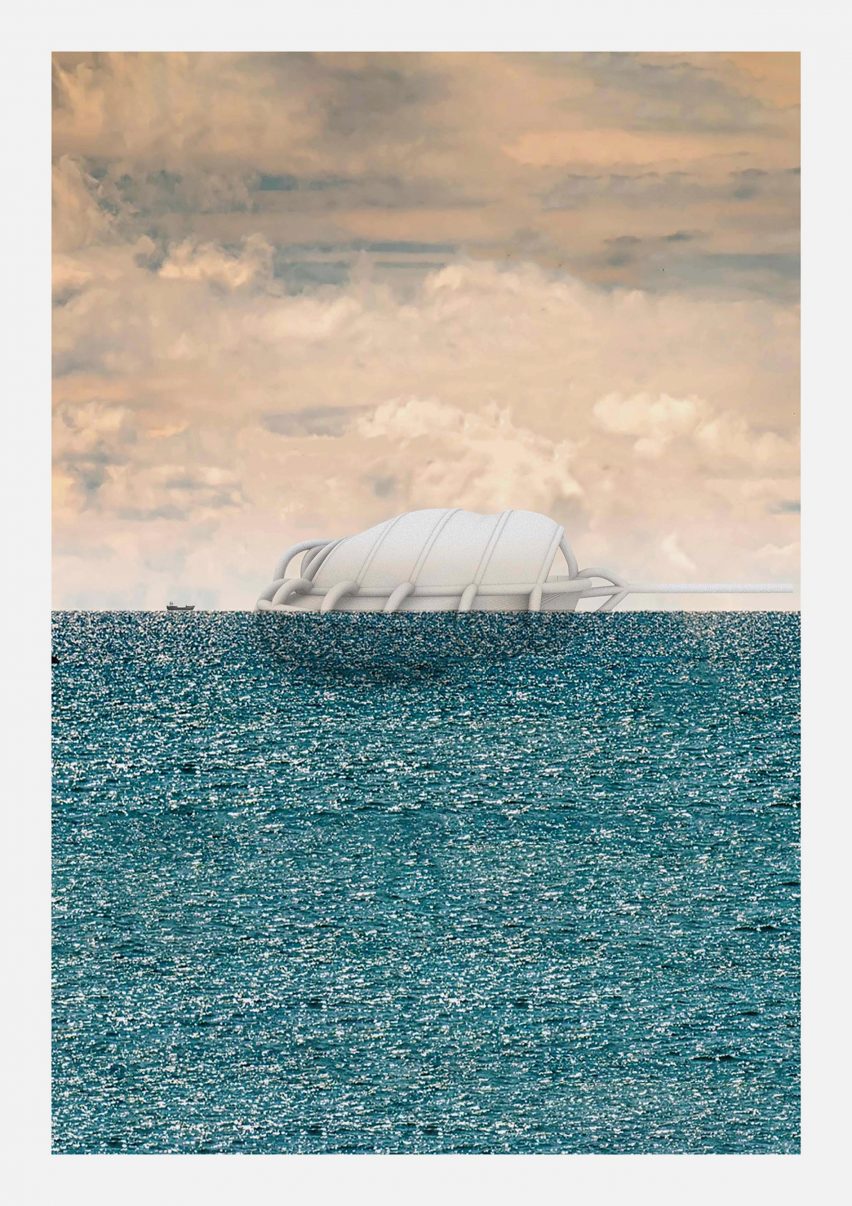
The Creature by Minnari Lee
“The North Sea has long been an imaginary space for mankind. This project is a future archive from the year 2200 in IJmuiden.
“It imagines a new form of offshore infrastructure: a floating entity that serves as an ‘indeterminate interface’ intertwining ‘hard’ technological systems with ‘soft’ biophysical processes.
“This entity can be seen as a regenerative farmer of the North Sea: growing seaweed and fish, desalinating seawater into freshwater, harvesting energy using waves and carrying these sea products to nearby cities, such as IJmuiden.
People live in close proximity to it, they engage in its construction, operation and maintenance in return for ‘harvest.
“It aims to redefine our somewhat forgotten relationship with our resources, landscape, non-humans and natural elements.
“Ultimately, it seeks to replace the way conventional infrastructure operates in our current environment. This is also a criticism of the latter, which involves brutal removal of unwanted – mostly natural – elements for its efficient operation and for the benefit of humans.”
Student: Minnari Lee
Course: Architecture
Tutors: Jeroen van Mechelen (mentor), Jandirk Hoekstra † and Marten Kuijpers
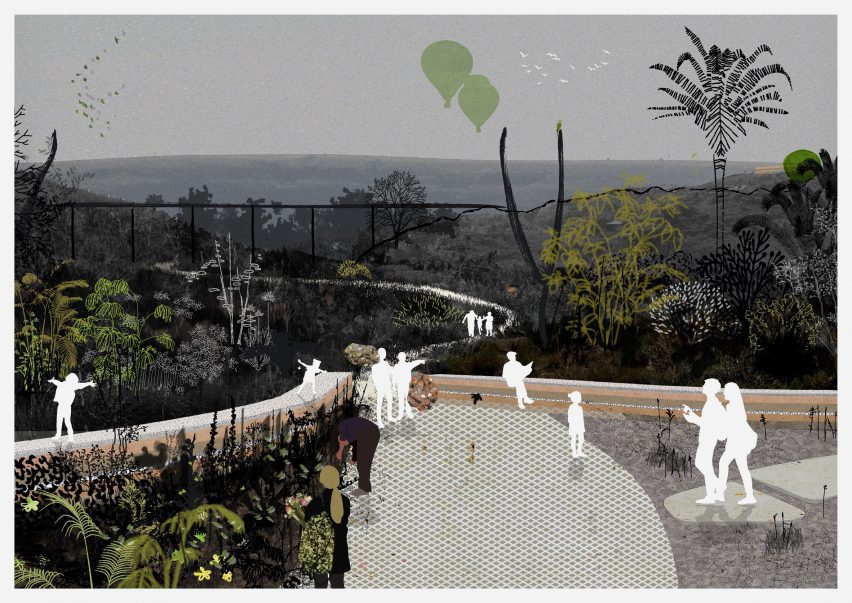
(Be)Coming Home by Renan Dijkinga
“(Be)coming Home focuses on the Campos Gerais region and my home of the Devonian Scarp in southern Brazil. This area’s identity is shaped by a rich tapestry of geological, natural and cultural-historical layers.
“However, extensive monocultures, exotic forestry and unregulated tourism risk making the region inhospitable, threatening the environment and local communities.
“I believe that landscape architecture’s role is to highlight, preserve and strengthen local identity, therefore focusing on developing a network of natural and cultural tourism sites, linking properties through regenerative land use.
“(Be)coming Home envisions reconnecting people with the land, blending traditional practices with natural systems, offering new ways for locals to engage with and transform land use, generating opportunities for landowners and residents.
Initiatives aim to create alternative livelihoods, regenerate the environment, attract new economic activities and help communities rediscover their landscape’s beauty.
“By leveraging tourism potential with a focus on residents, locals can be encouraged to appreciate and engage with their landscape through diverse uses and activities, with tourists remaining a secondary consideration.”
Student: Renan Dijkinga
Course: Landscape Architecture
Tutors: Jana Crepon (mentor), Jacques Abelman and Raul Corrêa-Smith
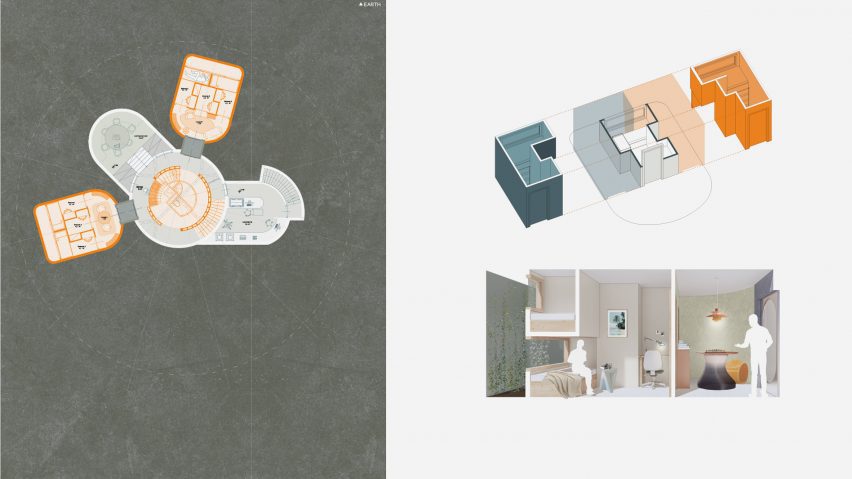
Lunar Lessons by Thais Zuchetti
“Lunar Lessons is the design of a planetary habitat aimed at knowledge transfer between the Moon and Earth.
“The idea is to learn from the Moon what it takes to live in an unliveable place, so that we could perhaps apply such lessons to an alien Earth in the future.
“On the other hand, the lessons from Earth are a direct alternative to the coming space exploration settlements, which are often envisioned and developed to look as clinical and cramped as possible and provide just the bare minimum for astronauts.
“Through the process, it became clear the fact that ‘cramped’ and ‘bare minimum’ conditions for the inhabitants are not exclusive characteristics of lunar habitats; the lessons from the Moon are closer to home than what we expect.
“Lunar Lessons: Habitat for planetary living is, in fact, a project about the people (regardless of which planet they are on).
“Thinking of the people, the Moon base is designed from the perspective of the wellbeing of the crew, incorporating conceptual architectural techniques from Earth to simulate not only the variety of spaces and atmospheres we are used to on our planet, but also the interactions between people and the rituals from home.”
Student: Thais Zuchetti
Course: Architecture
Tutors: Stephan Verkuijlen (mentor), Bernard Foing and Natalie Dixon
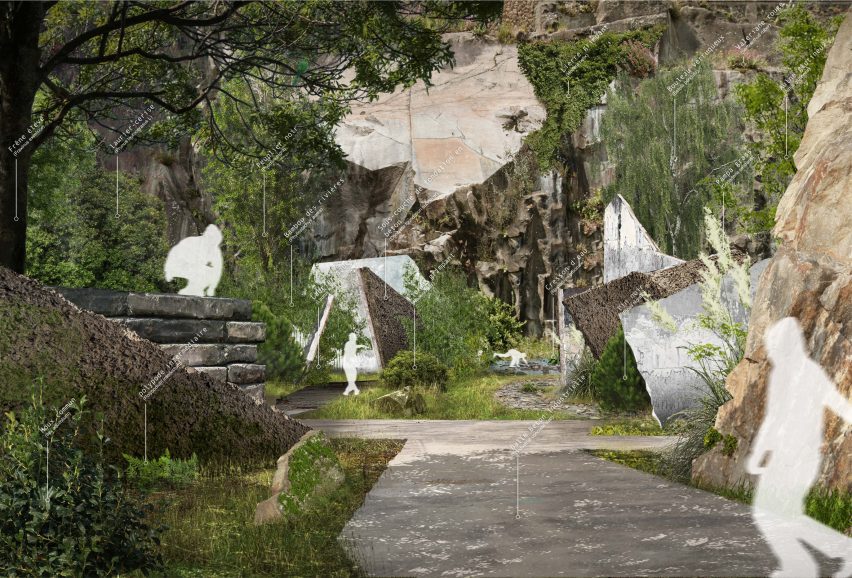
Echoes of Home by Vincent Lulzac
Echoes of Home: Rediscovering Nantes’ landscape through movement is a cultural garden project in which visitors are invited to interact and connect with the geological, hydrological and anthropological forces that lay the foundations of the city of Nantes.
“The seven ha project site lies at the crossing of a 300-kilometre-high geological fault and the 1000-kilometre-long horizontal Loire river, dividing the greater landscape of Nantes.
“In response to the city’s heritage, the project seeks to emancipate itself from extractive practices, both in its narrative and execution.
“Rooted in a personal quest to decolonise the practice of landscape architecture, this project tries to reclaim Nantes’ cultural and natural heritage, while encouraging a deeper connection between visitors and the land.
“By suggesting movement, visitors are invited to engage with the space, not only visually, but also physically. The design was approached like choreography, where the visitors and the elements are part of a dance.”
Student: Vincent Lulzac
Course: Landscape Architecture
Tutors: Thijs de Zeeuw (mentor), Erik A. de Jong and Lada Hršak
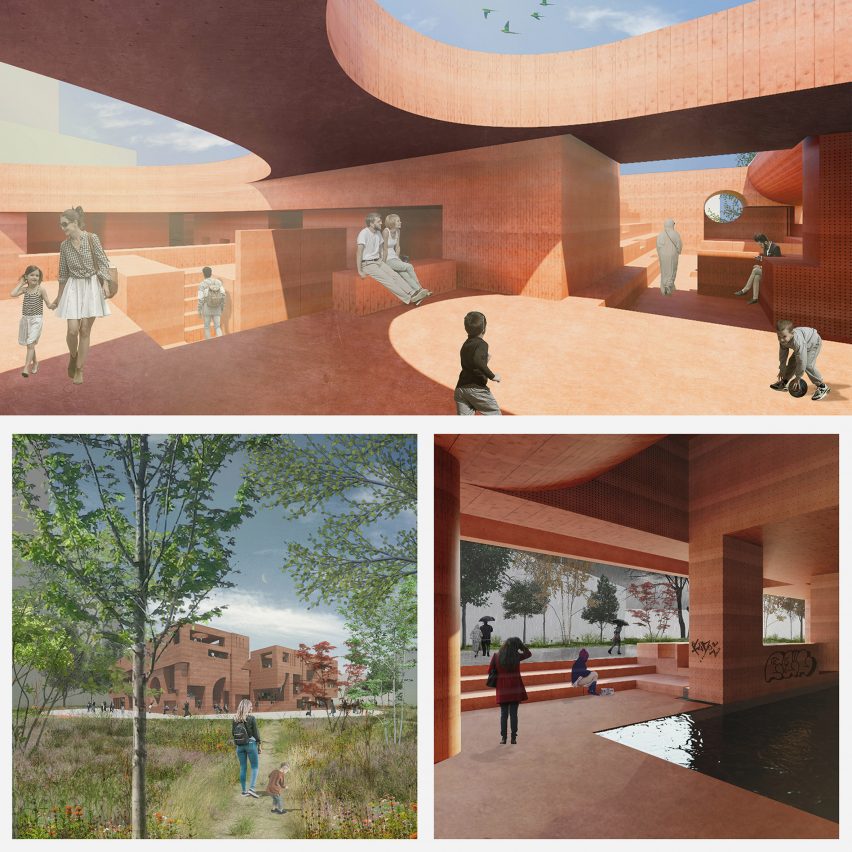
Modus Vivendi by Dennis Koek
“Modus Vivendi stands as the monument of social integration, serving as an ode to the social encounter and flexibility that we have lost in our polarised, intercultural society, yet so desperately need.
“The monument is a socio-architectural sculpture that honours, facilitates and stimulates social exploration, discovery and interaction in our intercultural co-existence.
“The research question in this project revolves around the role architecture should play in the social integration of intercultural society.
“The research, the developed theories and the realisation of the socio-architectural project Modus Vivendi are based on scientific theoretical studies from sociology and environmental psychology.
“This has resulted in an architectural design of the social monument, which also serves as a manifesto for a shift in mentality regarding the social aspect of design in public architecture.”
Student: Dennis Koek
Course: Architecture
Tutors: Wouter Kroeze (mentor), Txell Blanco Diaz and Paul Kuipers
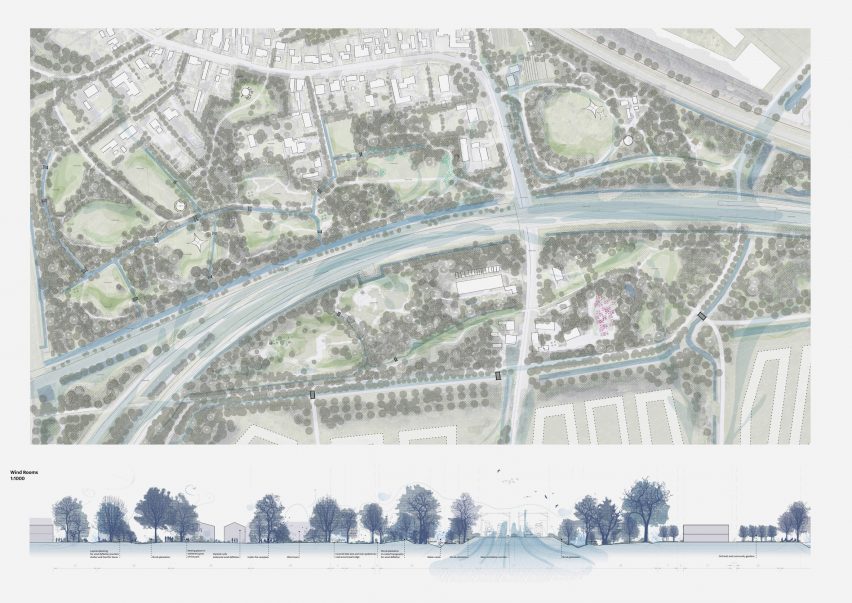
Wind woven by Rachel Borovska
“Urban heat islands pose a significant challenge in today’s cities and the need for cooling and preserving biodiversity are pressing issues.
“This research-by-design project is dedicated to uncovering the conditions necessary to enhance the cooling capacity of wind, starting from two primary wind directions: in the Netherlands, the southwesterly winds typically bring strong cold winds, peaking from autumn to spring, whereas during summer, warm air from the east can exacerbate the urban heat effect.
“Wind patterns are explored as a design tool along the railway corridor site of Breda, stretching from east to west, which play a crucial role in ventilating urban environments due to their expansive linear profiles and open surfaces.
“Rather than treating these design areas as blank slates, they are seen as integral elements contributing to ventilation, (airborne) ecology and cooling principles.
“They are infused with wind as a medium, composing a green wedge that weaves through the existing context and structures, connecting neighbourhoods through a biodiverse, ecological network.”
Student: Rachel Borovska
Course: Landscape Architecture
Tutors: Gert-Jan Wisse (mentor), Nikol Dietz and René van der Velde
Partnership content
This school show is a partnership between Dezeen and Amsterdam Academy of Architecture. Find out more about Dezeen partnership content here.

